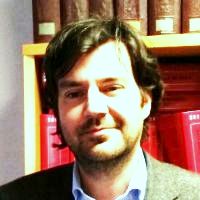The origins of MED-A
Our story begins in the 2000s. A young cardiology resident working in Parisian hospitals was confronted with a dilemma.
2001 a large international study revolutionized the management of many patients with heart disease (myocardial infarction). High risk patients were implanted with a preventative defibrillator on a large scale which resulted in an increased survival rate. From then on, the installation of these devices has undergone rapid growth and the indications for its use have widened.
But these patients suffer a second blow: :
Still shocked by the diagnosis and treatment but with a lowered risk of sudden death or syncope, they are prohibited from non-essential driving for a period of up to 6 months and indefinitely prohibited from driving professionally.
Their whole life changes, and profound personal, professional, and family upheaval occurs.
Patients experience strong restrictions on their daily mobility, and the discomfort of dependence on their loved ones.
Unfortunately, the users of these devices are not the only ones affected and because of this the young cardiology resident has aged but retains the same motivation for change.
He had to wait until 2017 the evolution of technology to make Med-A feasible today.
Our story begins in the 2000s. A young cardiology resident working in Parisian hospitals was confronted with a dilemma.
2001 A large international study revolutionized the management of many patients with heart disease (myocardial infarction). High risk patients were implanted with a preventative defibrillator on a large scale which resulted in an increased survival rate. From then on, the installation of these devices has has undergone rapid growth and the the indications for its use have widened.
But these patients suffer a second blow: :
Still shocked by the diagnosis and treatment but with a lowered risk of sudden death or syncope, they are prohibited from non-essential driving for a period of up to 6 months and indefinitely prohibited from driving professionally.
Their whole life changes, and profound personal, professional, and family upheaval occurs.
Patients experience strong restrictions on their daily mobility, and the discomfort of dependence on their loved ones.
Unfortunately, the users of these devices are not the only ones affected and because of this the young cardiology resident has aged but retains the same motivation for change.
He had to wait until2017 for the evolution of technology to make Med-A feasible today.






